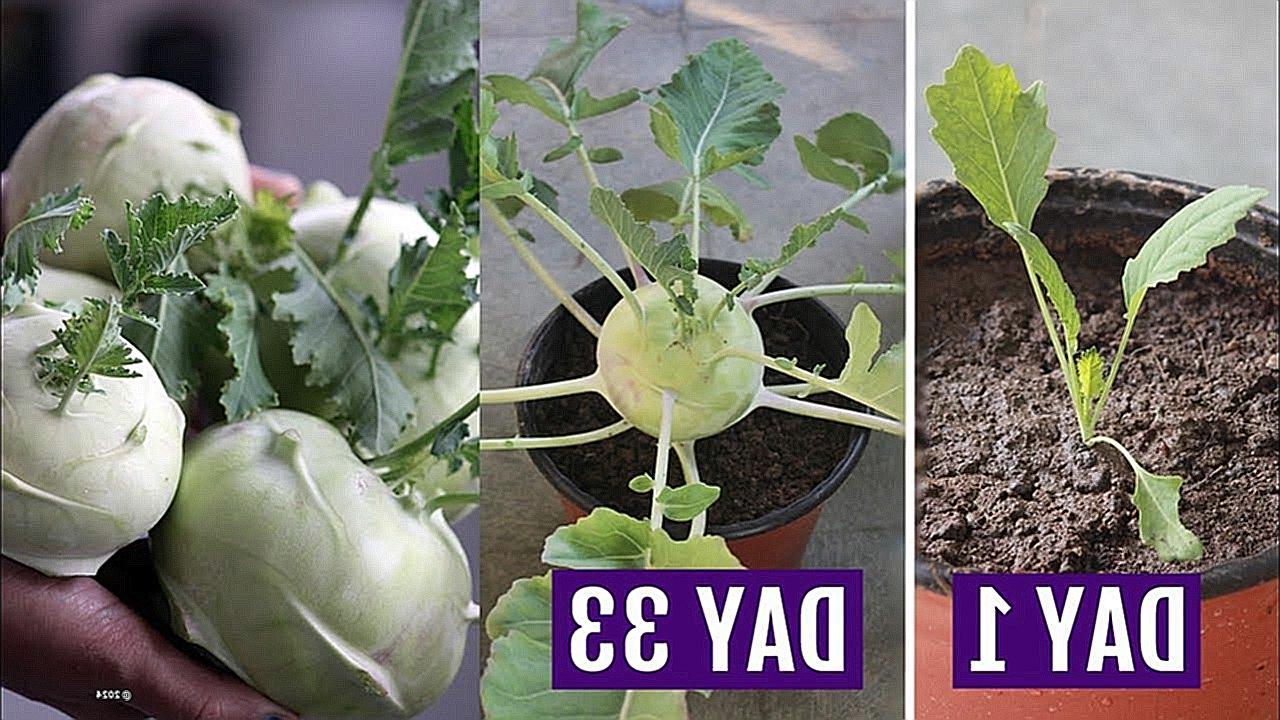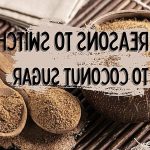Yes, kohlrabi can go bad, but spotting the signs is easy if you know what to look for. Kohlrabi spoilage isn’t just about wasted food – it’s about food safety and getting the most out of this versatile veggie. Here’s what you need to know:
- Texture changes: Soft, squishy, or slimy kohlrabi is a no-go
- Visual cues: Large brown or black spots signal spoilage
- Smell test: Off odors mean it’s time to toss
- Mold alert: White fuzzy patches are a clear sign to discard
Fresh kohlrabi should be firm, crisp, and free from major blemishes. If your kohlrabi passes these checks, you’re good to go. But if it fails even one, it’s best to play it safe and throw it out.
Remember, proper storage is key to keeping kohlrabi fresh. Remove the leaves, pop it in a perforated plastic bag, and store it in your fridge’s crisper drawer. With these tips, you can enjoy crisp, delicious kohlrabi for up to two months.
Don’t let uncertainty about kohlrabi freshness hold you back from enjoying this nutritious vegetable. Armed with this knowledge, you can confidently select, store, and use kohlrabi in your cooking adventures.
Contents
- 1 How Long Does Kohlrabi Last?
- 2 How To Tell if Kohlrabi Is Bad? Top Signs
- 3 Additional Signs of Spoiled Kohlrabi
- 4 How to Store Kohlrabi to Extend Its Shelf Life?
- 5 Best Practices for Selecting Fresh Kohlrabi
- 6 Will Kohlrabi Grow Back After Harvesting?
- 7 How to Cook Kohlrabi That’s Expired?
- 8 Is There Any Expired Kohlrabi Recipes?
- 9 Conclusion
How Long Does Kohlrabi Last?
I’ve often wondered about the shelf life of kohlrabi. It’s not a veggie I use every day, so knowing how long it lasts is key.
How Long Does Kohlrabi Last in the Refrigerator?
Kohlrabi can be a bit tricky when it comes to storage. I’ve found that whole kohlrabi bulbs can last up to two months in the fridge if stored right. Here’s what I do:
- Cut off the leaves (they suck moisture from the bulb)
- Pop the bulb in the crisper drawer
- Or use a plastic bag with some holes for air flow
But what about cut kohlrabi? Well, it’s a different story. Once I’ve sliced into that crisp bulb, I know I’ve got about 4-7 days to use it up. I always store cut pieces in an airtight container or freezer bag.
Here’s a quick rundown of kohlrabi storage times:

| Storage Method | Shelf Life |
|---|---|
| Room temperature | 4-7 days |
| Refrigerated (whole) | Up to 2 months |
| Refrigerated (cut) | 4-7 days |
| Refrigerated (with tops) | 2-4 weeks |

Pro tip: Always pick firm, heavy bulbs with no bruises or cracks.
How Long Will Kohlrabi Last in the Freezer?
Freezing kohlrabi is a great way to keep it for longer. I’ve found that properly prepped and stored kohlrabi can last about 8 months in the freezer. Here’s my go-to method:
- Cut the kohlrabi into pieces
- Blanch for 1-2 minutes (this keeps the flavor and texture)
- Flash freeze on a tray
- Transfer to freezer bags
How Long Does Kohlrabi Last in Water?
Storing kohlrabi in water isn’t ideal for long-term storage. I’ve tried it, and it only keeps for about a week. Instead, I wrap it in a damp kitchen towel or use a plastic bag in the fridge. This method keeps it fresh for up to two months.
For cut kohlrabi, I’ve found that storing it in water can lead to nutrient loss. It’s better to wrap cut pieces in plastic wrap to prevent drying out.
How Long Does Cut Kohlrabi Last?
Once I’ve cut into a kohlrabi, the clock starts ticking. Cut kohlrabi typically lasts 4-7 days in the fridge. Here’s what I do to maximize its shelf life:
- Store in an airtight container or freezer bag
- Keep it in the crisper drawer
- Use within a week for best quality
Remember, the moment you cut kohlrabi, it starts to lose moisture and nutrients.
How Long Do Kohlrabi Seeds Last?
Kohlrabi seeds can last quite a while if stored properly. In my experience:
- Well-stored seeds can remain viable for 3-5 years
- Keep them in a cool, dry place
- Use airtight containers or seed packets
For the best germination rates, I like to use fresh seeds within 1-2 years.
How To Tell if Kohlrabi Is Bad? Top Signs
Knowing when kohlrabi has gone bad is crucial. Here are the top signs I look for:
Soft Spots and Sponginess
Fresh kohlrabi should be firm to the touch. If I notice any soft or spongy areas, it’s a red flag. I give the bulb a gentle squeeze – if it yields easily, it’s probably past its prime.
Off Smell
A fresh kohlrabi has a mild, slightly sweet scent. If I catch a whiff of something funky or sour, I know it’s time to say goodbye. Trust your nose – it’s usually right.
Visible Mold
Mold is a definite no-go. I always check for fuzzy spots, especially in the nooks and crannies. Small patches can sometimes be cut away, but if there’s a lot of mold, it’s best to toss the whole thing.
Discoloration or Slimy Texture
I keep an eye out for any brown or black spots on the skin. If the kohlrabi feels slimy to touch, that’s another sure sign it’s gone bad. Fresh kohlrabi should have a crisp, clean feel.
Additional Signs of Spoiled Kohlrabi
Beyond the obvious signs, there are a few more things I check:
Changes in Leaf Appearance
If the leaves are still attached, they can tell you a lot. Wilted, yellowing, or slimy leaves are a sign that the kohlrabi is past its prime. Fresh leaves should be crisp and vibrant.
Unusual Taste
If all else looks okay, but the taste is off, trust your taste buds. Fresh kohlrabi should have a mild, slightly sweet flavor. Any bitterness or strange taste means it’s time to discard it.
Wrinkled or Shriveled Skin
A fresh kohlrabi should have smooth, taut skin. If I notice the skin becoming wrinkled or shriveled, it’s a sign that the kohlrabi is drying out and losing its freshness.
How to Store Kohlrabi to Extend Its Shelf Life?
I’ve learned a few tricks to keep kohlrabi fresh for longer:
Refrigeration
The fridge is your friend when it comes to kohlrabi storage. I always pop mine in the crisper drawer. It keeps them cool and humid – just how kohlrabi likes it.
Using a Damp Paper Towel
This is a neat trick I use: wrap the kohlrabi in a slightly damp paper towel before refrigerating. It helps maintain the right humidity level and keeps the bulb crisp.
Perforated Plastic Bags
I like to store my kohlrabi in plastic bags with a few holes punched in. It allows for some air circulation while preventing moisture loss.
Keep Away from Ethylene Producers
Here’s something I learned the hard way: kohlrabi doesn’t play well with ethylene-producing fruits like apples and bananas. I keep them separated to prevent premature spoilage.
Best Practices for Selecting Fresh Kohlrabi
Picking the right kohlrabi is half the battle. Here’s what I look for:
Checking for Firmness
I always give kohlrabi a gentle squeeze. It should feel firm and heavy for its size. Any soft spots are a no-go for me.
Inspecting the Leaves
If the leaves are still attached, I check them out. Fresh, crisp leaves usually mean a fresh bulb. Wilted or yellowing leaves? I pass on those.
Examining the Color
Color can tell you a lot. I look for vibrant green or purple bulbs, depending on the variety. Any discoloration or dull patches are red flags.
Will Kohlrabi Grow Back After Harvesting?
I’ve experimented with this in my garden. Kohlrabi doesn’t regrow after you harvest the main bulb, but if you leave the stem in the ground, it might produce side shoots. These are usually smaller and less flavorful than the main bulb.
How to Cook Kohlrabi That’s Expired?
If your kohlrabi is just slightly past its prime but not spoiled, there are still ways to use it:
- Soups and stews: Slightly soft kohlrabi works well in these dishes.
- Roasting: Toss with olive oil and roast until caramelized.
- Purees: Blend with other veggies for a smooth side dish.
Remember, if it’s moldy or smells bad, it’s best to toss it out. Safety first.
Is There Any Expired Kohlrabi Recipes?
While I wouldn’t recommend using truly expired kohlrabi, there are recipes that work well for kohlrabi that’s just past its peak freshness:
- Kohlrabi Fritters: Grate and mix with eggs and flour for crispy fritters.
- Kohlrabi Slaw: Shred and mix with carrots and a tangy dressing.
- Kohlrabi Soup: Simmer with potatoes and blend for a creamy soup.
These recipes can help you use up kohlrabi that’s still good but not quite fresh enough for raw preparations.
Conclusion
Knowing when kohlrabi has gone bad is crucial for food safety and enjoyment. Fresh kohlrabi should be firm, crisp, and free from major blemishes. Keep an eye out for key signs of spoilage: soft or squishy texture, large brown or black spots, off odors, and white fuzzy mold patches. If your kohlrabi fails even one of these checks, it’s best to discard it.
Proper storage is essential for maintaining freshness. Remove the leaves, place the bulb in a perforated plastic bag, and store it in your fridge’s crisper drawer. This method can keep kohlrabi fresh for up to two months. For cut kohlrabi, use an airtight container and consume within a week.
Armed with this knowledge, you can confidently select, store, and use kohlrabi in your culinary adventures. Don’t let uncertainty hold you back from enjoying this nutritious vegetable.
Trust your senses, follow these guidelines, and savor the crisp, delicious flavor of fresh kohlrabi in your meals.




